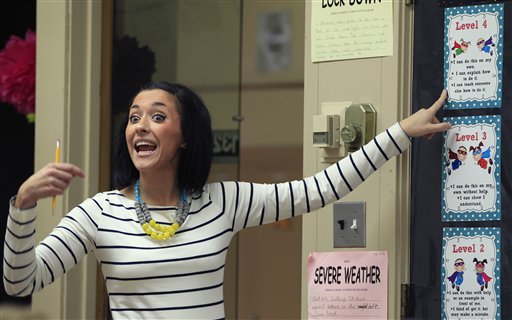My television producers asked our Facebook audience to vote for a topic they’d most like to hear discussed on my year-end show. The overwhelming winner, for some reason: the education standards program Common Core.
Videos by Rare
Most Americans don’t even know what that is. But they should. It’s the government’s plan to try to bring “the same standard” to every government-run school.
This may sound good. Often, states dumb down tests to try to “leave no child behind.” How can government evaluate teachers and reward successful schools if there isn’t a single national standard?
But when the federal government imposes a single teaching plan on 15,000 school districts across the country, that’s even more central planning, and central planning rarely works. It brings stagnation.
Education is a discovery process like any other human endeavor. We might be wrong about both how to teach and what to teach, but we won’t realize it unless we can experiment — compare and contrast the results of different approaches. Having “one plan” makes it harder to experiment and figure out what works.
Some people are terrified to hear “education” and “experiment” in the same sentence. Why take a risk with something as important as my child’s education? Pick the best education methods and teach everyone that way!
But we don’t know what the best way to educate kids is.
As American education has become more centralized, the rest of our lives have become increasingly diverse and tailored to individual needs. Every minute, thousands of entrepreneurs struggle to improve their products. Quality increases, and costs often drop.
But centrally planned K-12 education doesn’t improve. Per-student spending has tripled (governments now routinely spend $300,000 per classroom!), but test results are stagnant.
“Everyone who has children knows that they’re all different, right? They learn differently,” observed Sabrina Schaeffer of the Independent Women’s Forum on my show. “In the workplace, we’re allowing people flexibility to telecommute, to have shared jobs. In entertainment, people buy and watch what they want, when they want.” Having one inflexible model for education “is so old-fashioned.”
No Child Left Behind programs were an understandable reaction to atrocious literacy and graduation rates — but since school funding was pegged to students’ performance on federally approved tests, classroom instruction became largely about drilling for those tests and getting the right answers, even if kids did little to develop broader reasoning skills. So along comes Common Core to attempt to fix the problem — and create new ones.
Common Core de-emphasizes correct answers by awarding kids points for reasoning, even when they don’t quite get there.
A video went viral online that showed a worried mom, Karen Lamoreaux — a member of the group Arkansas Against Common Core — complaining to the Arkansas Board of Education about complicatedly worded math problems meant for fourth-graders. She read to the board this question: “Mr. Yamato’s class has 18 students. If the class counts around by a number and ends with 90, what number did they count by?”
Huh?
But I could be wrong. Maybe this is a clever new way to teach math, and maybe Lamoreaux worries too much. Unfortunately, though, if Lamoreaux is right, and the federal government is wrong, government still gets to decree its universal solution to this problem.
Promoters of Common Core say, “Don’t worry, Common Core is voluntary.” This is technically true, but states that reject it lose big federal money. That’s Big Government’s version of “voluntary.”
Common Core, like public school, public housing, the U.S. Postal Service, the Transportation Security Administration, etc., are all one-size-fits-all government monopolies. For consumers, this is not a good thing.
With the future riding on young people consuming better forms of education, I’d rather leave parents and children (and educators) multiple choices.
Despite Common Core, Schaeffer pointed out that this year did bring some victories for educational freedom. “We saw new education tax credit programs and expansion of tax credit programs in numerous states — Alabama, Indiana, Iowa and others. Education Savings Accounts expanded in other states; voucher programs expanded.”
This is good news. Vouchers, Education Savings Accounts and tax credits create competition and choice.
© JFS PRODUCTIONS INC.
DISTRIBUTED BY CREATORS.COM



